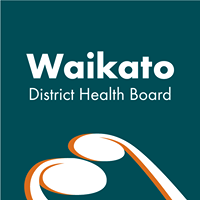11 November 2014
Cyanobacterial Warning Update: Health warning for Lake Hakanoa
A new health warning has been issued today for Lake Hakanoa in Huntly. The lake has had a rise in the cyanobacteria biovolume to 4.6mm3/L. Biovolume is the measure used to decide when a health warning should be issued, with the cut-off value for a health warning set at 1.8mm3/L.
Lake Waikare and Lake Rotoroa (Hamilton Lake) continue to have a cyanobacterial health warning in force. Lakes Waahi, Whangape and Ngaroto, the other lakes that are tested regularly, all currently remain below the warning level for cyanobacteria.
Testing is carried out by Waikato Regional Council monthly during the warmer months, and two monthly over the winter. The lakes which are tested may indicate, to some extent, cyanobacterial levels in other shallow lakes in the region.
Cyanobacteria are a form of algae which can produce toxins harmful to the health of humans and animals exposed to or swallowing the water where the algae are growing.
“During blooms, lakes should not be used for any activity that involves skin contact with the affected water. Swallowing water from lakes affected by blooms should also be avoided,” medical officer of health Dr Richard Wall said.
“Scums are a particular risk because they contain a high level of toxins. If contact with scum does occur, skin should be rinsed clean and clothing changed as soon as possible. This warning is particularly important for children.
“If people still choose to use the lakes when warnings are in place, or any other lake where there are visible changes to water colour, they should shower and change their clothing as soon as possible afterwards, even if no symptoms are noticeable,” he said.
Symptoms include rash, skin and eye irritation; allergy symptoms such as hayfever and asthma; and possibly stomach upsets including diarrhoea and vomiting.
These symptoms may not appear until some time after contact with the affected water. Long-term exposure to cyanobacterial toxins may cause additional health risks.
Waikato Regional Council no longer routinely tests Lake Kainui; however, caution is still advised for users of this lake because of its history of cyanobacterial blooms.
Waikato DHB’s Population Health service would like to be informed about health problems that develop after exposure to any of the Waikato lakes. Health advice is also available from Population Health on (07) 838 2569.
Up-to-date information on cyanobacterial cell counts is available from local councils and Waikato Regional Council.
ENDS



 University of Auckland: Tributes Flow For Much Loved Pacific Leader Melegalenu’u Ah Sam
University of Auckland: Tributes Flow For Much Loved Pacific Leader Melegalenu’u Ah Sam NZEI: Ministry Of Education Cuts Will Disproportionately Affect Pasifika
NZEI: Ministry Of Education Cuts Will Disproportionately Affect Pasifika Day One Hapai te Haeata: Call To Action For Young Filmmakers Against The Backdrop Of Funding Cuts
Day One Hapai te Haeata: Call To Action For Young Filmmakers Against The Backdrop Of Funding Cuts Toyota New Zealand: Three Races For Top Three To Decide TR86 Title
Toyota New Zealand: Three Races For Top Three To Decide TR86 Title Wellington City Council: Wellington Is All Action Stations For The Faultline Ultra Festival
Wellington City Council: Wellington Is All Action Stations For The Faultline Ultra Festival Melanie Allison: Local Playwright Casts A Spell Over Hamilton
Melanie Allison: Local Playwright Casts A Spell Over Hamilton